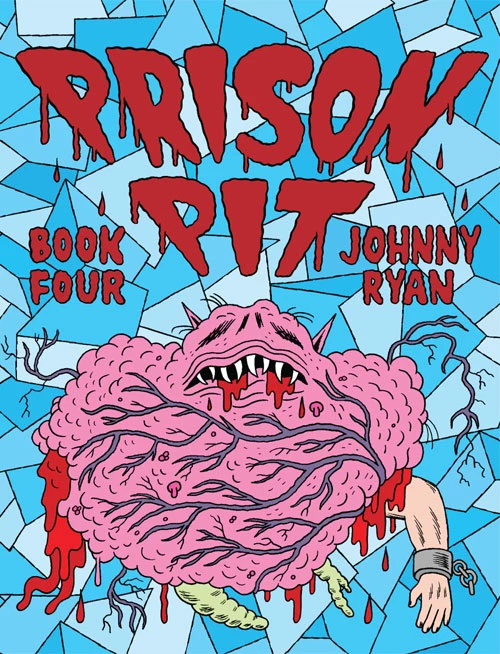
The Phil Coulson Memorial Awards: ComicsAlliance’s Best Comics of 2012, Part 5

Did you miss part three? Click here to catch up.
Did you miss part four? Click here to catch up.
About the Phil Coulson Memorial Awards
Phil Coulson was a S.H.I.E.L.D. agent who hung out with Iron Man and Thor and besides some sketchy familiarity with Tony Stark's gf Pepper Potts seemed like a pretty chill bro. Also, he collected Captain America trading cards. Coulson died trying to save the world from the evil alien-god Loki, which was a bummer, but his sacrifice was leveraged by his boss Nick Fury to inspire the disparate and butthurt Avengers do stuff like save the world.
Although we strongly suspect he'll be resurrected at some point in the very near future, this final installment of ComicsAlliance's selections of the best comics of 2012 is dedicated to Phil's "memory."
LITERALLY THE HEAVYWEIGHT LITERARY COMICS OPUS OF THE YEAR

Building Stories
By Chris Ware
Published by Pantheon
Available: Random House store / Comics shops
How best to describe the format of Chris Ware's extraordinary non-linear biography of a building and dissection of a life? It's not a book, nor even a collection of books. It's a box. A big, hard, heavy, six-pound box containing comics, pamphlets, folded strips, hardcovers, broadsheets, and even a back-boarded fold out that resembles a game board.
When I first laid out the contents of Building Stories in front of me I realized what it most reminded me of was the haul one brings back from a small press comic convention -- and it conjured all the excitement and wonder attendant to that experience. If only Ware had packaged Building Stories in a threadbare messenger bag decorated with handmade buttons, the comparison would have been complete.
Of course, a small press haul is usually a collection of many voices, many worlds. Building Stories is all Ware, in all his exacting rigidity and diagrammatic glory. Diversity of style gives way to a jeweler's precision, and the result is a world unpacked by a Masonic god. Ware can take us into private lives, behind doors, into thoughts, into the very lives and afterlives of insects, and at any scale the focus is the same. Readers are invited to unpack this orienteering map of a small universe either in orderly style or as an experience to dip in and out of. There are parts of the book that can be enjoyed curled up on the sofa with a hot drink, but one might as plausibly lay the parts out on the floor like a disassembled machine and try to understand how they fit together.
It's almost a quarter century since Will Eisner introduced us to his New York tenement tales, and by some standards invented the graphic novel. Chris Ware's Chicago brownstone serves as a worthy neighbor, and by some standards a reinvention of the form.
BEST APOCALYPSE OF 2012
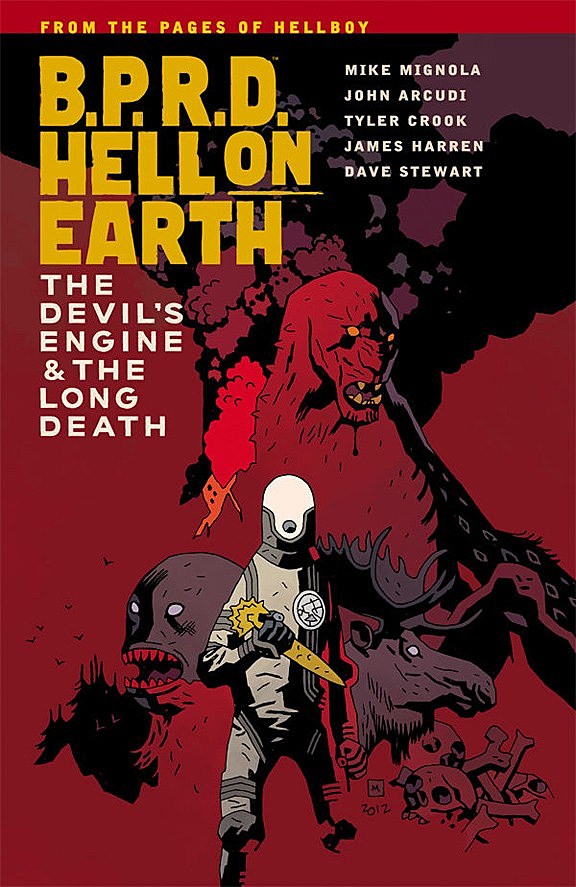 B.P.R.D. Hell on Earth
B.P.R.D. Hell on Earth
Written by Mike Mignola and John Arcudi
Artwork by Tyler Crook, James Harren, Dave Stewart
Published by Dark Horse Comics
Available: Dark Horse/TFAW store (print) Comics shops (print) / Dark Horse Digital
It is difficult to explain exactly why B.P.R.D. has consistently been one of the best ongoing comic book serials since it began in earnest in 2005. That's not because this is one of those intensely idiosyncratic, genre-mashing series that's so bizarre as to defy description, but because the saga of the Bureau for Paranormal Research and Defense is simply so damn good, so endlessly riveting and so impeccably plotted, designed and illustrated that to share a seemingly innocent moment risks tipping over any number of spoiler-cast story dominos. As a dedicated fan of this massive work, I couldn't live with myself if I injured a new reader's enjoyment even a little. If you are a new reader, here's a helpful guide to the books and in what order you should read them.
What I can tell you is that B.P.R.D. Hell on Earth (and the numerous supplementary one-shots and miniseries released throughout 2012) takes place in the aftermath of a great war between the government-sponsored freaks of our world's best defense against things that go "bump," or more typically, "SPLAAARRRRAARAGHGGGGHSSHH" in the night. Weird fish guy Abe Sapien, disembodied German psychic Johann Krauss, moody pyrokinetic Elizabeth Sherman and non-powered field leader and beleaguered den mother Dr. Kate Corrigan are among the specially gifted B.P.R.D. agents who grapple with their own compelling secrets and (sometimes literal) demons while they fight to save the world from an ancient evil that emerged from deep beneath its crust.
It's a fantastic backdrop for B.P.R.D.'s writers to explore not just the kind of monster-fighting horror stories that artists Crook, Harren and Stewart are so distinctly adept at depicting, but also for readers to get to know some of adventure comics' most captivating heroes. Along with the ferocious Captain Benjamin Daimio, Roger the homunculus and the great Hellboy himself, these characters are the modern classics of American comics; the Avengers and the Justice Leaguers of our darker age. But unlike their continuously reinvented corporate counterparts, the heroes of the B.P.R.D. are guided by the hands of their original creator(s). These characters will never be stripped of their weirdness or their contradictions or their bad decisions or their quirky obsessions, giving what in any other comic book could simply be bombastic, beautifully drawn end-of-the-world battles some real emotional weight -- so much that readers of this franchise have been moved to actual tears because in B.P.R.D., there's no going back.
The 2012 apocalypse really did happen, it was just in the pages of B.P.R.D.
MOST MYSTERIOUS MYSTERY
 Mind MGMT
Mind MGMT
By Matt Kindt
Published by Dark Horse Comics
Available: Dark Horse/TFAW store (print) / Comics shops (print) / Dark Horse Digital
In 2012 Matt Kindt continued to build upon his reputation as one of the most innovative and original voices working in comics. His preoccupations with puzzles, memory, the mechanics of espionage, shadowy organizations, and altered realities came together in Mind MGMT to form the most mysterious, intriguing, and potentially most dense story in his bibliography.
The first major, serialized comic book the writer/artist has attempted (everything else being original graphic novels, short stories, or online serials) Mind MGMT reveals that Kindt can add "masterful plotter" to his impressive list of talents as they apply to sequential art. So little is given away each issue while so many new questions are raised that when even the smallest answers are finally revealed, it feels like manna from Heaven. And there are answers. It's just that you have to work for them.
The mysteries of Flight 815, heroine Meru's fractured memory, and the spy organization known as Mind Management are intricate puzzles tightly woven into the story. But it's all there to be figured out. The adroit reader can learn loads of information, it seems, without Kindt ever really telling us anything. Little is given away, but most of it's there, in bonus strips on the inside covers, slight background details, the three-part promotional Secret Files series, "Field Guide" entries, and fake advertisements. There's even a secret code made up by the back covers of the first six issues that leads to additional content at mattkindt.com. Anyone curious and mentally dexterous enough can find so much more to love by seeking out the additional material, taking a second look, and playing along with the ongoing mind game.
So many mysteries in comics are whodunnits -- noir and detective stories that focus on one crime, one victim, one murderer, and that's fine. Sometimes that's great. But Mind MGMT is magical realism about a conspiracy that goes back decades and spans the world; a maze that taunts you with the hope of escape before shifting and rearranging into a new pattern. With every answer revealed to the reader, every victory Meru ekes out, the questions only multiply and the rabbit hole goes deeper. No other comic this year was as immersive or intriguing as the slowly-unfolding mystery that is Mind MGMT.
BEST COMIC ABOUT SPORTS
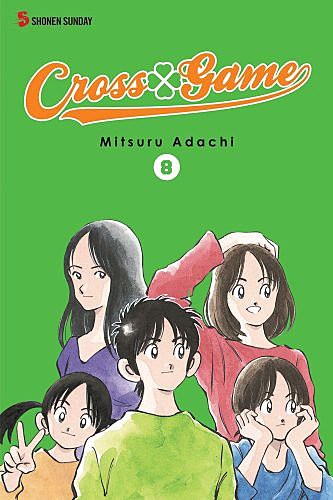 Cross Game
Cross Game
By Mitsuru Adachi
Published by Viz Media
Available: Viz store (print and digital) / Comics shops
Mitsuru Adachi's Cross Game, the latest sports manga from the legendary, multiple award-winning artist, is a delight. Adachi spends about as much time on the baseball as he does poking fun at his cast, exploring life in school, and cracking jokes about being a manga author. It came to its natural end this year, Adachi having reached the end of his story, and it's definitely a hallmark of the sports comics genre.
What's curious about Cross Game is that it isn't as concerned with performance as other sports manga I've read. Being good at baseball is of course an issue in the book, obviously, but it isn't the driving force. Our cast is good at what they do. Some of them are exceptional, and some are just okay, but generally, they all perform on a competitive level. Cross Game isn't about being the best. It's about fulfilling dreams.
The characters in Cross Game dream big, and we get to see how real life affects those dreams. The tension comes from the conflicts between characters, but we rarely see anything particularly devastating or horrible happen. Instead of waiting for the other shoe to drop, you read Cross Game to see people win. It's an uplifting comic, the kind that makes you feel good whenever you read it, no matter what happens.
Baseball is just the engine that makes the story go. Everyone's involved with the sport, and a large portion of the book is set during a series of games and practices, but you're really just reading to see how Ko Kitamura and Aoba Tsukishima's friendship is going to evolve this time. It's a good read and a good time.
FUNNIEST SUPERHERO SEX COMEDY ABOUT SEX AND STUFF
 Empowered Volume 7
Empowered Volume 7
By Adam Warren
Published by Dark Horse Comics
Available: Dark Horse/TFAW store and comics shops (print) / Dark Horse Digital
I'd long been aware of Adam Warren's much acclaimed superhero sexy comedy that simultaneously criticizes and celebrates the obvious sartorial inequities suffered by women of the cape-and-cowl set, but it was only in 2012 that I took the plunge via Dark Horse's extremely helpful omnibus editions and discovered that I'd been missing out on one of the most fun (and indeed sexy) comics I've ever read.
Empowered is a brave and true superherine whose various powers come from her hypermembrane supersuit, which, in what's plainly a bit of commentary on the depiction of female superheroes over the years, is so delicate as to become all but completely shredded in even the most mild of battles, and is so ridiculously skintight as to give Emp all manners of hangups, insecurities and complexes about her body (she is especially concerned about her butt, and it doesn't help that her roommate, a piece of alien bondage gear known as the Caged Demonwolf, does not stop remarking upon it). In a further bit of commentary that plays to creator Adam Warren's roots in manga and fetish art, Emp's powers diminish concurrently with her suit's, er, coverage, causing her to end up in curiously sexualized bondage at the hands of numerous supervillains and a laughing stock amongst her colleagues in the Superhomeys. Fortunately Emp has a great support system in the form of her best friend Ninjette -- who, in another break with convention, is actually a white girl from New Jersey -- and her awesome boyfriend Thugboy, a former henchman who reformed after a run-in with Empowered. Together, these four characters navigate a hyper-stylized and always cute and funny world of over-the-top villains, underpar superheroes and the variously compelling and humiliating mysteries of their own pasts.
Warren tells Empowered's story in the form of short vignettes that contain themes and threads that build over the course of a couple hundred pages to create a fairly unique graphic novel experience. It's like you've read a ton of short stories, yet also a single massive one. One gets the sense that Warren could tell an unbroken 200-page story if he wanted to, but he's having too much fun with the freedom of episodic storytelling, where he can divert to different characters and plots and avail himself of endlessly amusing chapter titles like "Thuperlame," "Do-Me-Riffic" and "Schrödinger's Catgirl." Emp breaks the fourth wall many times to introduce these stories, and those are occasions where Warren takes on a role that's like a more lovable version of Bugs Bunny's sadistic animator from Chuck Jones' classic "Duck Amok," drawing Empowered in ways that annoy her and prompt angry outbursts in his direction (and apologies to the reader).
I can't think of another comic that demonstrates just how much fun its creator is having than Empowered; it's like a joyous noise unto the lord of comics. Reproduced directly from Warrens' tightly rendered, super expressive pencils, this comic revels in the joy of characterization, comedy, action, sex, a great love story, and just pure old fashioned cartooning.
SPECIAL AWARD FOR VALOR IN COMICS FANDOM
 Tumblr
Tumblr
Curated by countless fans and comic book professionals
Good place to start: The #comics tag, which links to some of Tumblr's most active comics blogs
By this point the role of Tumblr in comics is almost without question. If we didn't know better we'd say Tumblr was a blogging platform built specifically for the speedy display and dissemination of comic art. It is completely fascinating, the way that a narrative voice begins to make itself heard simply through the act of scrolling through a Tumblr of carefully curated images from somewhere else. The sensation is almost sinister in its accumulation. The impact of the experience is that it allows you to to think about Tumblr itself as a comic.
If comics are sequential images formed into a narrative, then someone's personal Tumblr blog becomes a personal comic. But what is interesting is that if you are following someone on Tumblr and reading them via your dashboard -- where all the disparate blogs you follow are presented as a stream of images, videos, text and other content -- the "comic" reads out of order and with interruptions. Whereas if you navigate to the Tumblr page directly, what you see is uninterrupted but typically in chronologically reversed order. Think of it as progress to an indeterminate end versus the moving away from a more and more distant beginning. What's more, many Tumblr themes necessarily warp images to pre-programmed parameters. They become changed and new both in context and in construction.
Tumblr is all utterly fascinating to digest on a number of levels, not the least of which is because it's simply pretty to look at, but more importantly, because increasing numbers of comics readers are reacting not by leaving comments on blogs like this one but actually creating work of their own. Whether in the form of fanart, mashups, redesigns, remixes, cosplay, those silly rage comics or even wholly original material from talented people who may not even aspire to be professionals, this is just how they respond to art naturally.
In this special way I think Tumblr reflects where comics are now, which is a testament to the adaptability of the medium. The arcane practices of the direct market can't kill this thing that evolves and applies itself in all kinds of weird ways upon our lives. As it becomes more and more a natural part of how the Internet expresses itself, comics becomes a medium through which more and more people see the world differently. The images of these books and characters have taken on lives of their own. Comics culture is now happening online at light speed in the simple transaction and reorientation of these images and concepts through our own personal prisms on Tumblr, Twitter and whatever's next. In turn, I think this process is resulting in the kind of work we are seeing people do on the page, and I suspect we'll see some hard evidence of this on next year's list.
BEST NOT-ACTUALLY-A-COMIC-BOOK
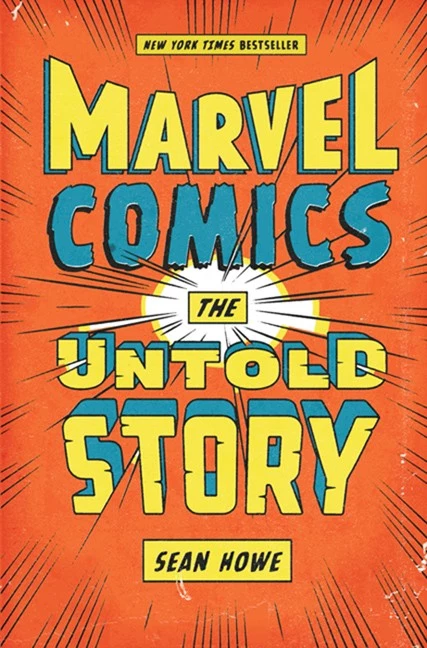 Marvel Comics: The Untold Story
Marvel Comics: The Untold Story
By Sean Howe
Published by HarperCollins
Available: Bookstores
In a year when Marvel Comics characters made literally a billion dollars at the box office, it's important to remember that those characters all came from a handful of human beings -- with all their attendant prejudices, personalities and quirks -- working furiously against deadlines, office politics and often their own devices to create a fictional reality for others to inhabit; for a price, of course. Sean Howe's Marvel Comics: The Untold Story is a deep look at these human beings and the multi-billion dollar universe they helped to create.
The book is a crackling, energetic read, with well-researched stories featuring all the players you'd expect: Stan Lee and Steve Ditko's legendary run on Amazing Spider-Man; Lee and Jack Kirby's Fantastic Four; Steve Gerber's Howard the Duck and Man-Thing comics; the '70s work of Steve Englehart, Marv Wolfman, Jim Starlin, Len Wein, Don MacGregor and Doug Moench; Chris Claremont and John Byrne's Uncanny X-Men and Claremont's subsequent X-Men sub-universe; and of course the eventual founders of Image Comics as their stars were on the rise at Marvel. The history of Marvel's various corporate owners is given a hard look as well, with the Cadence/New World years generating some frankly insane turns that nearly destroyed the company. You also get to know the editors, production staff and Bullpen personalities like Morrie Kuramoto, John Verpoorten, Danny Crespi and Marie Severin.
Above all else, you're made acutely aware that Marvel staffers and freelancers are real live people who worked (and work) tirelessly to make sure that these four-colored epics hit the stands every week, and it's sobering and often heartbreaking to see some of these people get run over as their company pushed (and pushes) toward bigger profits. I mean, this book made me feel sorry for the notoriously domineering former Marvel Editor-In-Chief, Jim Shooter. Jim Shooter, you guys!
Marvel Comics: The Untold Story is not a perfect book; you can tell Howe's just not all that interested in the narrative once Jim Shooter leaves the company, and with the comics of the late '80s and early '90s being more about the personalities and the covers they drew than the actual comics within, well, you can hardly blame him. But the massive amounts of good in this book far outweigh the bad, leaving you with a read that's packed to bursting with amazing stories behind the amazing people that built an empire.
MOST EFFECTIVE VALIANT RELAUNCH (THIS DECADE)
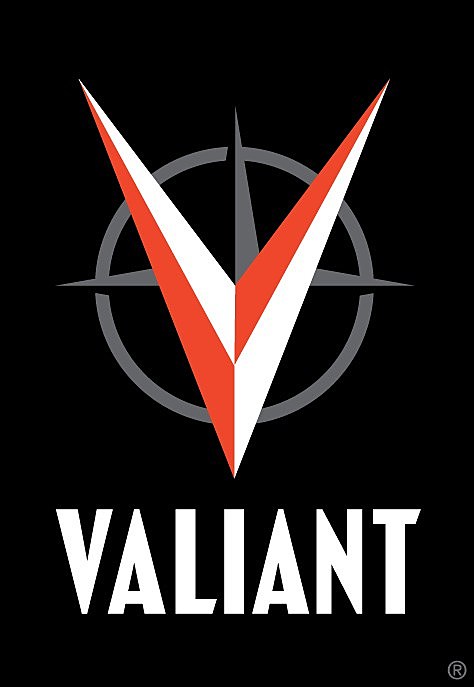 Valiant Comics
Valiant Comics
Executive Editor, Warren Simons
We've seen a lot of relaunches lately, from single characters to larger publishing lines to entire companies. Relaunches aren't created equal, either. Some relaunches go big and revamp dozens of things simultaneously. Others play it safe and just switch things up here and there. Sometimes relaunches fall flat, sometimes they're amazing, and sometimes they're just... okay. Valiant Comics relaunched this year, and I think that they've produced one of the most effective relaunches in recent memory.
Valiant's relaunch is conservative in some ways and aggressive in others. Instead of launching with an entire universe being carefully mapped out and spread across several titles, Valiant kept it simple. They launched with a single title, X-O Manowar, in May, added Harbinger in June, Bloodshot in July, and Archer & Armstrong in August. A fifth title, Shadowman, launched in November. This slow roll-out made it made it easy to give one of Valiant's books a try on a whim. You weren't overloaded with new books, and staffing those comics with pros like Robert Venditti, Cary Nord, Joshua Dysart, Khari Evans, Duane Swierczynski, Fred Van Lente, Justin Jordan and artist Patrick Zircher didn't hurt.
The aggressiveness comes in when you consider how Valiant's new line is interconnected. They all take place in the same universe. A rookie mistake would be to produce a reading order and base your entire universe around the fact that it's a connected universe. Valiant, though, keeps it simple. The books clearly take place in the same world and share certain elements, but feature a variety of tones, approaches, and styles. They're all adventure comics, but they're all different takes on the genre. Some are funny, some are deadly serious.
The universe is there, but it's yours to discover. It feels more organic, more natural, to leave it to the reader to connect the dots early on. It lets the reader opt-in to the universe at large, rather than opting out. Not all of the books will be to your taste, but Valiant has a strong shot of having something in its library that you'll dig.
OUTSTANDING ACHIEVEMENT IN COMIC BOOK STORYTELLING (ABOUT LOKI)
 Journey Into Mystery
Journey Into Mystery
Written by Kieron Gillen
Artwork by Richard Elson, Alan Davis, Carmine Di Giandomenico, Barry Kitson, Stephanie Hans, Mitch Breitweiser, Whilce Portacio, and Dougie Braithwaite
Published by Marvel Comics
Available: Comics shops (print) / ComiXology (digital)
Planning. It's a good idea whose time has come. That sounds a little glib -- it is a little glib -- but the optimistically open-ended nature of many comic narratives does not lend itself well to planning. Both the ephemeral origins of the medium and the churn of writers on corporate comics have eroded any broad expectation of coherent long-form storytelling -- set-up, build-up, payoff -- beyond what fits in a single trade paperback. Chris Claremont was always an outlier, and his hyper-extended trails of breadcrumbs may have put the whole idea out of vogue.
But ambitious planning can happen, and it can work -- and like Hannibal, I love it when a plan comes together. Not only does it show respect for the audience and the medium -- stories should have structure, whether it's 22 pages or 200 issues -- but it also shows confidence and ownership on the part of the author. It shows, in a word, authority.
I'm not talking here about "having an end in mind." Goals are not plans. Maps are plans. Blueprints are plans. Plans are created by people with a vision of the whole, not just an idea about the destination. Kieron Gillen had a plan when he took on Journey Into Mystery (aka JiM). The extent of that plan only became clear to readers this year as his 25-issue run reached its conclusion, and the result was an enormously satisfying tale. Seeds were planted, stories were tended, and plausible but unexpected pay-offs were harvested in abundance, and the satisfaction of the ending made the whole work greater. The secret here is simple: Good endings make good stories, and good planning makes good endings.
And no-one would necessarily have expected it, which might be the most satisfying part. Gillen's leading man was Loki, a character for whom planning -- tricking -- is first nature, so it makes sense that there was an agenda at work. But this was a third-tier book that seemed unlikely to last very long, with a traditionally antagonistic supporting character as its lead, and not two, not three, but four crossover events shackled to its ankles.
Gillen put some of his best work into a book that could have been a footnote in his surging career. The book never got the time or the space it deserved, and Gillen worked around format and other industrial constraints that might have made other writers throw up their hands in despair, yet he made it stick. Journey Into Mystery was not the work of a journeyman writer. This was a man with a plan.
BEST ULTRA-VIOLENT SUPERHERO COMIC WITH HEART
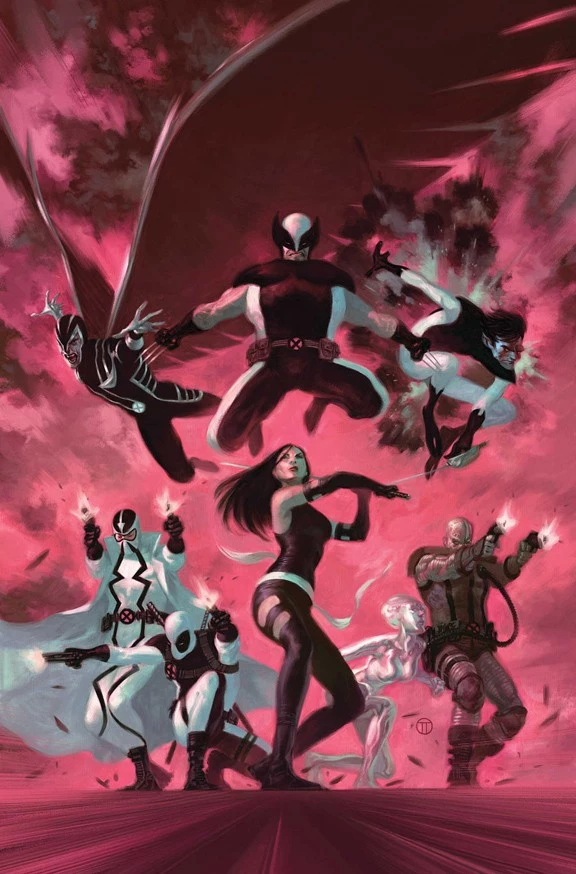 Uncanny X-Force
Uncanny X-Force
Written by Rick Remender
Artwork by Phil Noto, Greg Tocchini, Billy Tan, Robbi Rodriguez, Jerome Opeña, Esad Ribic
Published by Marvel Comics
Available: Comics shops (print) / ComiXology (digital)
Uncanny X-Force shouldn't have been as good as it was, but from the shock ending of the very first issue onwards, it proved it was ambitious enough to try -- and eventually, succeed at -- being a title that featured a raw, beating, humanist heart underneath the glossy, Jerome Opeña-rendered violent veneer. For over thirty-five issues the series tracked the adventures of Wolverine and a group of fellow mutants who shared the common bond of lethality as they carried out ultra-violent and morally dubious missions without the knowledge of the rest of the X-Men.
Despite its grim premise, Uncanny X-Force was in reality an extremely funny, imaginative, thrilling, intelligent, thoughtful, fun and, at times, deeply sad comic. The last issue of this book -- an almost perfect capstone -- was titled "Rainbows, Puppy Dogs & Sunshine," and it came off as a mournful epitaph rather than an ironic joke. Writer Rick Remender and artist Phil Noto closed the book on this chapter of the team with panache, and while I'm excited to see the title's remaining plot threads picked up in Uncanny Avengers, these 35 issues will remain a high point in Marvel's recent history.
MOST PAINFULLY/COMICALLY TRUE-TO-LIFE WEBCOMIC
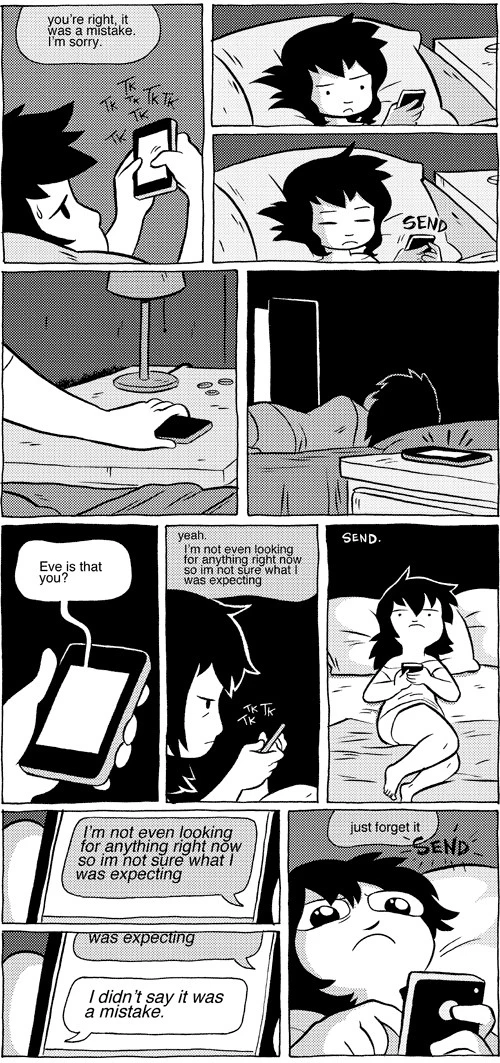 Octopus Pie
Octopus Pie
By Meredith Gran
Available: On the web (free) / Topatoco (print)
Written with earnestness and emotional depth and drawn with simplistic but purposeful black and white lines, Octopus Pie is likely the most honest comics account of what it's like to truly grow into adulthood. The main character, Eve, is a woman approaching 30 and getting through life the best any of us can. Eve's friends are the typical assortment of baristas, small-time drug dealers, interns, freelancers, and other post-college people so easily defined as hipsters. Instead of mocking a supposed lifestyle of metropolis dwelling young adults prone to obscure music taste and organic food, Octopus Pie sympathetically shows what it's like for the characters to find their place in a society that offers little direction or even hope to a generation doomed to be less economically successful than their parents -- all while realizing how absurd such a relatively privileged life can be.
Don't be too alarmed by thinking the webcomic will totally bum you out; Octopus Pie is funny. However, it's more in the tradition of British comedy, the kind that's always hinted with a touch of underlying sadness. Things don't always work out, and even when they do, not everyone gets to live happily ever after. And, perhaps most important, life never neatly wraps up events like plot lines, people continue to evolve and be defined, even dragged down, by their past actions.
Almost every persona is easily recognizable, full of defining characteristics, and perfectly at home in the comic's setting of New York City. Comparisons to Sex and the City aren't without merit due to the fearless sexuality of Gran's characters, but unlike the glamourous women in that fashion-obsessed television show, the characters in Octopus Pie struggle with everyday problems like being able to pay rent and keeping their hourly-wage jobs. If it's close to any TV show, the webcomic is more like what 30 Rock's Liz Lemon's life was like before landing a high-paying gig for a corporate studio. Octopus Pie also takes similarly hilarious liberties with reality, best showcased in the subplot of Eve belonging to a secret society of coffee pourers obsessed with rival beans and methods.
In addition to Octopus Pie, Gran kept busy in 2012 with work on BOOM! Studios' Adventure Time spinoff Marceline and the Scream Queens, which is also great. But let's hope she saves time next year to continue Octopus Pie, one of the best ongoing serials on the web.
Prison Pit Book Four
By Johnny Ryan
Published by Fantagraphics
Available: Fantagraphics (print + digital) / Comics shops (print)
Something wonderful happened when I read the first book in Johnny Ryan's annual Prison Pit series back in 2009. As I immersed myself in the book's preposterously profane power fantasy, the shame I'd accumulated over the course of a childhood spent making muscle-bound action figures say and do unspeakable things to one another stepped outside of my soul and was sucked forevermore into the tome's 120-or-so pages like... uh... Slimer into a Ghostbuster trap? I no longer felt like I'd wasted years of my life acting out crude monster battles. It was like looking at a baby book of bad ideas from boyhood as an adult who'd learned to function in polite society.
The fourth installment of Prison Pit built on the catharsis supplied by books two and three and proved the most intense yet. The cosmic criminal protagonist Cannibal F*ckface awakens from a previous skirmish the captive of psychic jerks clad in spiked 12-sided die helmets. He confronts his predicament like all of us wish we were able to, with a savage brand of defiance and constant dumb luck. From there the story follows its usual pattern of predictable unpredictability. An evil dude making his way across a barren hellscape bends anyone who gets in his way to his will through hyper-violent exchanges involving a cocktail of bodily fluids. It's as silly and gross and great as you secretly want it to be, page after page.
Our world isn't inherently a prison. Our allies aren't usually symbiotic limbs that act as weapons or instruments of self-pleasure. Our enemies are rarely literal scrotum-shaped mutants capable of birthing weapons of mass destruction from every one of their disgusting orifices. Children aren't mindless biomass brutes. We try to act like adults and cope with daily chaos and get along with others, and that's a good thing. Really.
For roughly half an hour a year, though, it's bliss to kick back and watch humankind's most immature impulses play out in the safety of Ryan's Prison Pit.
HOTTEST BARBARIAN SEX COMIC
 Conan the Barbarian: Queen of the Black Coast
Conan the Barbarian: Queen of the Black Coast
Written by Brian Wood
Artwork by Becky Cloonan and James Harren and Dave Stewart
Published by Dark Horse Comics
Available: Dark Horse/TFAW store and comics shops (print) / Dark Horse Digital
It was no surprise that Brian Wood, creator of Vertigo's brutal Viking battle comic Northlanders, would come out the gate at Dark Horse with a suitably exciting and violent Conan the Barbarian, full of the kind of bloody adventure and delightfully overwrought narration and ultra-manly exchanges you'd expect from Robert E. Howard's iconic warrior, where every issue feels like the hero has pulled some enormous weight from one fantastically exotic part of the ancient world to the other. But what did surprise me was just how damn sexy this comic would be.
Set during the titular barbarian's early 20s, this Conan story focuses squarely on his relationship with Bêlit, the dreaded pirate queen of the black coast who before had never found a mate worthy of her mystique and elemental beauty. It's a coupling defined by lust, power, submission, passion, and true love -- in that order. Contrasting extreme closeups of both characters' idillic physical attributes -- their pouty lips, sweaty muscles, naked flesh and those laser beam sex eyes -- with gorgeous vistas and scenes of extreme violence, artists Becky Cloonan and James Harren create an immersive fantasy world full of equal parts thrilling danger and smoldering desire. It's a world that's utterly unique in mainstream American comics today, where most romances remind you of network sitcoms, and where most depictions of a "strong, sexually empowered heroine" remind you of the T&A comics you thought were really naughty when you were 13. No, Conan the Barbarian is an adventure comic for grown-ups; a comic where the two heroes' passion for and devotion to one another drive the operatic story and inspire the at once sexy and grisly artwork to create a world you never want to leave. It's a story about two people whose passion is so savage, they're compelled to lay waste to every port of call and make love while cities burn.
Conan was a most welcome surprise in 2012, but as the Cimmerian's warrior code comes into further conflict with the pirate queen's dark, insatiable desires, I fully expect this series to become an even more compelling read in 2013.
BEST DAMN GRAPHIC NOVEL ABOUT A BUNCH OF DAMN GUYS ROBBING AN ENTIRE DAMN TOWN
 Parker: The Score
Parker: The Score
Based on the novel by Richard Stark
Adapted and illustrated by Darwyn Cooke
Published by IDW Publishing
Available: IDW store and comic shops (print) / ComiXology (digital)
If you're going to adapt a novel to into a comic, you have to do something different. I don't mean change the story, necessarily, but in some way you have to present some aspects of the story in a fashion that prose alone simply can't achieve. Otherwise, there really isn't much point. In the third installment of his adaptions of Richard Stark's Parker novels, Darwyn Cooke continues to do just that, and Parker: The Score might be the best one yet.
As with the first two installments, Cooke does a masterful job of portraying Parker exactly the way you'd assume Stark imagined the character: a big, serious, intimidating man, with a cold face and large hands that look like they were carved out of stone. But what separates this book from the others is the portrayal of other characters, and the way Parker interacts with them. The Score features a large group of men taking on a very large job -- robbing an entire town.
Each man has a specialty, something they bring to the job that no other can. Further, each man has his own personality, his own quirks, the most notable being Grofield. The closest thing Parker has to a friend in this group, Grofield is a showman/actor masquerading as a thief, or perhaps vice versa. As the robbery starts, we see exactly what Grofield sees: Music and theater. In his mind, Grofield isn't a man engaged in a carefully planned out robbery, he's Fred Astaire dancing with Ginger Rogers. He's Gary Cooper saving a town from a gang of killers. He's Lee Marvin in World War II. And in a series of panels, Cooke captures this perfectly, as we see glimpses into Grofield's mind of him jumping from role to role, until Parker tells him it's time to get serious. Each man in The Score reacts in their own unique way to the beginning of a heist, but none in a more entertaining way than the charming thief Grofield. In his novels, Stark tells you that Grofield loves to perform, but in this adaption, Cooke is the one who really makes him sing.
On a panel at San Diego Comic-Con earlier this year, Cooke said he believes that the late Donald Westlake, who used the pen name Richard Stark when writing his Parker novels, was a better writer than Raymond Chandler. For what it's worth, I'm inclined to agree with him, as the Parker books are among my favorite novels of all time. As a fan of both the Parker novels and Cooke, I couldn't imagine a more perfect marriage.
Somewhere, Donald Westlake is smiling.
Thanks for reading ComicsAlliance's picks for the best comics of 2012. We hope you enjoyed our commentary and will check out all the books you may not have read before using the provided links. If you missed any of the five parts of this list, just click here to catch up.
More From ComicsAlliance
![The Autobiography Of Loma: ‘Shade The Changing Girl’ #7 [Exclusive]](http://townsquare.media/site/622/files/2017/03/STCG_Cv7_featured.jpg?w=980&q=75)
![Bond After Brexit: Kieron Gillen Declassifies ‘James Bond: Service’ [Interview]](http://townsquare.media/site/622/files/2017/03/Service_McKelvie-feat.jpeg?w=980&q=75)


![Sail The High Seas In ‘Lobster Johnson: The Pirate’s Ghost’ #1 [Exclusive Preview]](http://townsquare.media/site/622/files/2017/03/LJOHNPG-1-000.png?w=980&q=75)
![Aric Is Having A Bad Day In ‘X-O Manowar’ #1 [Preview]](http://townsquare.media/site/622/files/2017/03/XO00.jpg?w=980&q=75)
![Journey Through The Shadows Of Deadside With A First Look At ‘Rapture’ [Previews]](http://townsquare.media/site/622/files/2017/03/Rapture00.jpg?w=980&q=75)
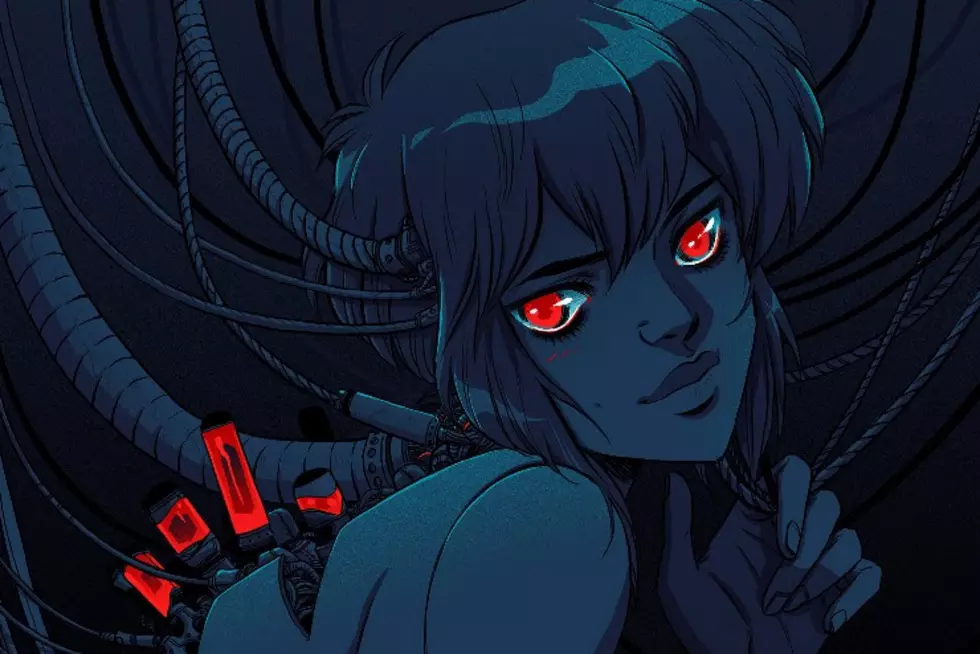
![Mike Mignola’s ‘Hellboy’ Extended Unvierse Continues To Expand In June Solicitations [Exclusive]](http://townsquare.media/site/622/files/2017/03/Hellboy-Solicit.png?w=980&q=75)

